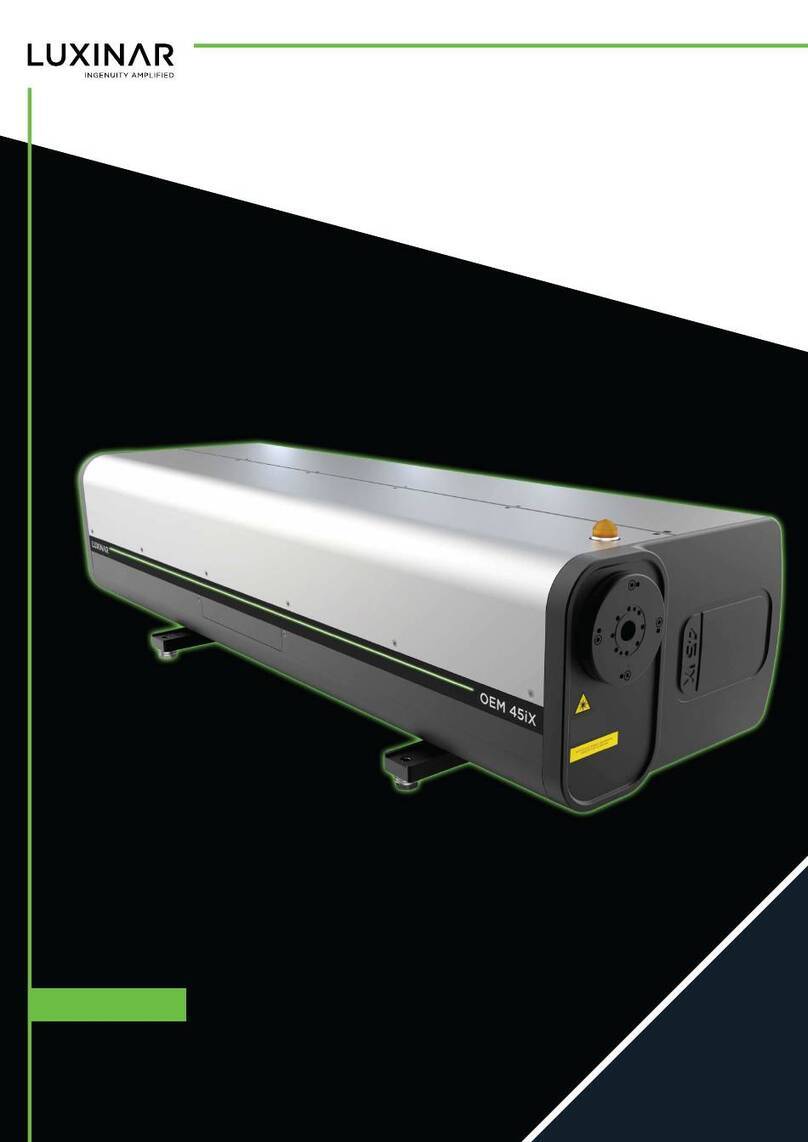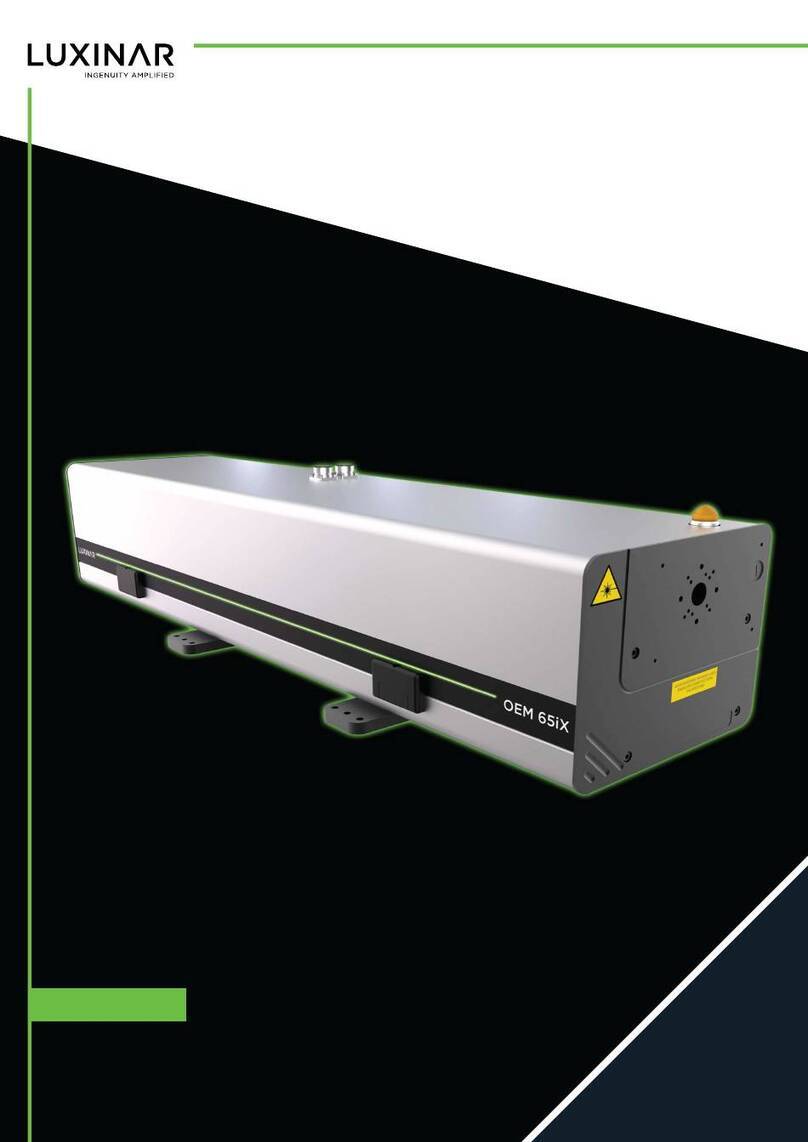
Table of contents
Preface
Audience
Other publications
How to use this manual
Admonitions
Connector labels and signal names
1. Safety........................................................................................................................................................... 1
1.1. General safety information................................................................................................................. 1
1.2. Laser radiation safety standards......................................................................................................... 1
1.3. Equipment safety standards................................................................................................................2
1.4. Intended use for the laser equipment................................................................................................ 2
1.5. Radiation hazards for CO2 lasers......................................................................................................... 3
1.5.1. Eye protection.............................................................................................................................. 3
1.5.2. Skin protection............................................................................................................................. 4
1.6. Other hazards...................................................................................................................................... 4
1.6.1. Airborne noise emissions............................................................................................................. 4
1.6.2. Protection against fire.................................................................................................................. 4
1.6.3. Fume and vapour hazard..............................................................................................................5
1.6.4. Electrical hazards..........................................................................................................................5
1.7. Recommended administrative precautions........................................................................................ 5
1.8. Training................................................................................................................................................6
1.9. Safety precautions...............................................................................................................................6
1.9.1. Laser radiation emission warning device..................................................................................... 6
1.9.2. Safety interlocks........................................................................................................................... 6
1.9.3. Safety shutter............................................................................................................................... 6
1.10. Additional system integrator safety precautions.............................................................................. 6
1.10.1. Emergency stop (E-stop) switch................................................................................................. 6
1.10.2. Power on/off key switch............................................................................................................ 6
1.10.3. Manual restart............................................................................................................................6
1.11. Safety warning labels........................................................................................................................ 7
1.12. Label locations...................................................................................................................................7
1.13. Labels................................................................................................................................................ 8
1.14. Maximum Permissible Exposure and Nominal Ocular Hazard Distance........................................... 9
1.15. AOM module cover interlock.......................................................................................................... 10
1.16. Decommissioning and disposal....................................................................................................... 10
2. General Description................................................................................................................................... 11
2.1. Laser head......................................................................................................................................... 11
2.2. DC power supply (optional)...............................................................................................................11
2.3. Specifications.................................................................................................................................... 11
2.3.1. RF power supply......................................................................................................................... 11
2.3.2. Dimensions................................................................................................................................. 12
2.3.3. Weights...................................................................................................................................... 12
2.3.4. Cooling system........................................................................................................................... 12
2.3.5. Optics purge gas......................................................................................................................... 13
2.3.6. Environmental specifications..................................................................................................... 13
2.3.7. Performance...............................................................................................................................14
3. Operation...................................................................................................................................................15
3.1. Overview of operating modes........................................................................................................... 15
3.2. AOM operation overview.................................................................................................................. 15
3.3. General considerations before starting the laser..............................................................................15
3.4. Start-up............................................................................................................................................. 15
3.5. Shut-down......................................................................................................................................... 16
3.6. Emergency stop................................................................................................................................. 16
3.7. Pulse compensation.......................................................................................................................... 16
906-0227-00 REV 1 i Table of contents






























